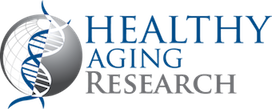
Healthy Aging Research
Open Access
ISSN: 2261-7434

ISSN: 2261-7434
Opinion Article - (2024)Volume 13, Issue 4
Aging is a natural and inevitable process, but it doesn’t have to mean a decline in physical health. As people age, their bodies go through numerous changes, but the way individuals approach these changes can significantly impact their overall well-being. While the effects of aging on physical health can be challenging, maintaining a healthy lifestyle can slow down, or even prevent, many age-related health issues.
Physical changes of aging
As people age, their bodies undergo several natural changes. Some of the most noticeable include
Decreased muscle mass and strength: One of the most significant changes is the loss of muscle mass and strength. This process, known as sarcopenia, begins in middle age and accelerates with age. As muscle mass decreases, older adults may experience reduced stamina, weaker bones, and a higher risk of falls or fractures. Strength and flexibility also decline, which can impact balance and mobility.
Joint changes and reduced mobility: Joint pain and stiffness become more common as people age, often due to conditions like osteoarthritis. Cartilage, which cushions joints, wears down over time, leading to inflammation, pain, and decreased range of motion. This can make everyday activities, such as walking, climbing stairs, or even getting out of bed, more difficult.
Bone density loss: Bone density tends to decrease with age, making bones more fragile and prone to fractures. Osteoporosis, a condition where bones become brittle due to a loss of bone mass, is more prevalent among older adults, especially postmenopausal women. This puts them at a higher risk of falls and fractures, which can severely impact quality of life.
Reduced cardiovascular and respiratory function: The heart and lungs also experience age-related changes. Blood vessels become stiffer, and the heart's ability to pump blood effectively can decrease, leading to higher blood pressure. Reduced lung capacity can make it harder for older adults to take deep breaths, and the ability to exercise vigorously may decline.
Common physical health concerns in older adults
With the aging process come several health concerns that are more common in older adults:
Chronic conditions: Older adults are more likely to develop chronic conditions such as diabetes, hypertension (high blood pressure), and heart disease. These conditions can be managed with proper care, but they often require lifestyle adjustments, regular monitoring, and sometimes medication.
Falls and injuries: One of the most significant risks for older adults is falling. As balance and coordination decline with age, so does the ability to avoid accidents. Falls are a leading cause of injury and hospitalization among older adults, and they can lead to long-term disabilities or even death, particularly if fractures occur in the hip or spine.
Reduced immune function: The immune system weakens with age, making older adults more susceptible to infections, illnesses, and diseases. Conditions like the flu, pneumonia, and COVID-19 can be more severe in the elderly. Maintaining a healthy lifestyle, including proper nutrition and exercise, can help keep the immune system strong.
Vision and hearing loss: Aging can lead to vision problems, such as presbyopia (difficulty seeing up close), cataracts, and macular degeneration. Hearing loss is also common, which can impact communication and social interaction. Both can lead to decreased quality of life and increased risk of accidents or isolation.
Strategies for maintaining physical health in later years
While aging brings inevitable physical changes, adopting healthy habits can help mitigate many of the effects. Here are several strategies that older adults can adopt to maintain physical health:
Regular exercise: Physical activity is perhaps the most important factor in maintaining health as we age. Regular exercise helps maintain muscle mass, improve cardiovascular health, boost metabolism, and enhance bone density. It can also improve flexibility, balance, and mobility, reducing the risk of falls. Activities like walking, swimming, yoga, or strength training can be adapted to suit individual needs. Older adults should aim for at least 150 minutes of moderate-intensity exercise per week, according to health guidelines.
Balanced nutrition: A balanced diet is crucial for aging well. As metabolism slows, it becomes important to consume nutrientdense foods rather than empty calories. Older adults should focus on a diet rich in fruits, vegetables, whole grains, lean proteins, and healthy fats. Ensuring adequate calcium and vitamin D intake is vital for bone health, while staying hydrated is important for overall bodily function. Consulting a nutritionist or doctor can help create a personalized plan that meets specific health needs.
Regular health check-ups: Preventive healthcare becomes even more important with age. Regular health check-ups allow for early detection and management of chronic conditions like diabetes, high blood pressure, or cholesterol. Routine screenings for vision, hearing, and bone density can also help identify problems before they become severe. Vaccinations, including the flu shot and pneumococcal vaccine, are also essential for preventing illness.
Physical health is a cornerstone of aging well. While the aging process naturally brings about physical changes, it doesn’t mean that good health is out of reach. By maintaining a healthy lifestyle through regular exercise, balanced nutrition, routine check-ups, and fall prevention, older adults can continue to enjoy vibrant, fulfilling lives. In addition, mental well-being plays an essential role in overall health, so it's important to care for both the body and mind as we grow older. With the right approach, aging can be a time of vitality, rather than decline.
Citation: Jie C (2024). Age with Strength: Preventing Physical Decline through Healthy Habits. Healthy Aging Res. 13:222.
Received: 27-Nov-2024, Manuscript No. HAR-24-35585; Editor assigned: 29-Nov-2024, Pre QC No. HAR-24-35585 (PQ); Reviewed: 13-Dec-2024, QC No. HAR-24-35585; Revised: 20-Dec-2024, Manuscript No. HAR-24-35585 (R); Published: 27-Dec-2024 , DOI: 10.35248/2261-7434.24.13.222
Copyright: © 2024 Jie C. This is an open-access article distributed under the terms of the Creative Commons Attribution License, which permits unrestricted use, distribution, and reproduction in any medium, provided the original author and source are credited.